A Pennsylvania Dutch Story

Today I bring you a piece that was originally published at the DailyCal by Eythana Miller titled The fastest growing American language you’ve never heard of.
Eythana grew up in Northwest Montana in a traditional Amish community that slowly modernized as she was growing up. She moved to California at 17 and is set to graduate from UC Berkeley with her bachelor’s degree in Political Economy this spring.
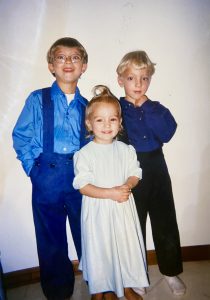
Photo from Eythana’s personal collectio
Here is Eythana’s story of her journey from Pennsylvania Dutch to Standard German:
Ich bin mied (“I’m tired”) feels like being tired. Ich bin müde (“I’m tired”) feels like remembering the right word, molding my mouth to fit around the odd shape of this slight change to the adjective describing my exhaustion. Reorienting syllables to fit the conventions of the language that lies over my existing vocabulary is an iterative, familiar process for me. I speak Pennsylvania Dutch and I’m learning Standard German, the linguistic ancestor of my language.
Pennsylvania Dutch is native to the religious, insular group known as the Amish, who have lived in the United States since the early 18th century after they immigrated from Germany and Switzerland. It used to be spoken more widely by nonsectarians (people not associated with religious groups such as the Amish or Mennonites) in Pennsylvania and other Eastern states. Geographical mobility after that period and the increasing legal and social pressure to only speak English in schools caused a gradual but devastating decline in usage. Most notably, as Pennsylvania Dutchman Douglas Madenford writes, “It was, of course, not fashionable to speak a Germanic language while we were at war with Germany.” Anti-German sentiment during the period of both world wars discouraged usage and created a hostile environment for speakers. And as Meryn Oswald points out in her article “Death of the Dutchy?”, “When two languages exist simultaneously, but do not have separate and equally valid spheres of usage, speakers will invariably choose one language over the other.” The winner is typically the majority language out of convenience.
These nonsectarian speakers developed some words the Amish never adopted — such as “gookbox,” meaning “television” — made up of the Standard German word “gook,” which means “look,” and the English word “box.” The Amish don’t watch TV and never needed the word. They remain largely sheltered from the mainstream and look to their communities for fulfillment of most social, financial and educational needs, which results in an environment conducive to linguistic preservation. Combined with birth rates that far exceed the average American family’s, this means it’s one of the fastest growing minority languages in the United States.
A peculiar event during World War II simultaneously illustrates that usage was more common then and how little visibility the language has always had across the American public. A Pennsylvania Dutch-speaking soldier was wounded while fighting in France before the Battle of the Bulge, and when a nurse overheard him at the hospital speaking to a German prisoner of war, his officers accused him of being a Nazi spy. He was held for a month as a German prisoner, all the while expecting to be brought before a firing squad as punishment because everyone refused to believe he was American. After detailing his life in Pennsylvania during multiple interrogations, he convinced the lieutenant to send his fingerprints to Washington to be verified, and his identity was finally confirmed.
My exposure to Standard German as a child in Montana included occasionally singing hymns in church such as “Gott ist die Liebe” (“God is love”) and “Wir loben dich” (“we praise you”). My parents had sometimes read the Bible in German because it has been used by the Amish, individually and in church services for hundreds of years, even though most of them don’t understand everything they read. I’d opened one a few times, wondering at the gothic script and unwieldy spellings that I couldn’t parse through. Standard German existed in a neglected liminal space for me, above and outside and around the language I knew well, where the scope of daily conversation resided. But the idea of learning it had grown like a barnacle in my consciousness, and at age 20 I found myself in community college with a language requirement. Through German classes over Zoom, I learned how to introduce myself and count properly in the spring of 2021, and continued classes once I got to Berkeley under professors who taught with patience and good humor. I even joined professor Nikolaus Euba’s cabaret class in which I memorized poetry and rehearsed for a small performance in German for a semester.
Telling others what language I speak isn’t as simple as it sounds, as it’s known by several names, including Deitsch, which native speakers use among themselves. It is also often called Pennsylvania German in an attempt to distance it from the Dutch spoken in the Netherlands. The “Dutch” title stuck because many Germanic dialects in the 17th and 18th centuries lived under that heading, when most immigrants were trekking to the United States. Only after Germany became a unified nation in 1871 did anyone question whether the original “Dutch” or the newly coined “German” would make more sense for what was now an American language tracing back its roots.
Pronunciation, word usage and definitions have been evolving slowly ever since immigration, but overall Pennsylvania Dutch has stayed intact — a surprising fact considering how minority languages often change when surrounded by other linguistic influences. Some words have changed only marginally, such as the word for “expend.” It shifted from “ausgeben” to “ausgewwe.” “Frighten” changed from “erschrecken” to “verschrecke.” Some Standard German words are cognates, sharing pronunciation and meaning with only small changes in accent, or perhaps no differences at all. Others are entirely foreign to Standard German. Because of how long our language has existed and been evolving in American communities rather than Europe, it has taken on many sounds, syllables and characteristics of English.
These anglicisms include words that are just English with an accent, such as store (“schtor”) and picture (“pikder”). There are also complete adoptions of words without any accent change, like “friend” and “paper,” which are already so similar in Standard German (“freund” and “papier”) that the English pronunciations likely won out. Others such as “pickle” and “actually” (“essiggurke” and “eigentlich”) have no obvious justification beyond slow changes over time.
There’s an issue that scholars, linguists and Pennsylvania Dutch-speaking laypeople raise when discussing our language — that of spelling. It is exclusively spoken, without a commonly used written component. Written communication is always conducted in English, so there’s no standardization of spelling. The two options we’re faced with when we attempt to transcribe speech are traditional German spelling or phonetic spelling using some English pronunciation conventions. The word “finished,” for example, could either be spelled “fertig,” as in German, or “faddich,” which more closely resembles our pronunciation. “Uneasy” in German spelling is “unruhig,” phonetically “unroohich.”

Image in original publication
In 1879, scholar E. H. Rauch compiled a guidebook to Pennsylvania Dutch and wrote in his introduction that he felt ill equipped to write it because of “a lack of sufficient experience to make my spelling of words consistent and uniform.” He chose to use English spellings, reasoning that, “from eighteen to twenty percent, of all the words commonly used in Pennsylvania Dutch are either English or a compound of English and German, and . . . all the youth of our State is taught to read English, and comparatively but few receive any sort of German education.” Most Amish people resort to phonetics because many aren’t familiar enough with written Standard German — though historically and in scholarly work on the Amish, German spelling is more common.
Native speakers of any language will acknowledge they don’t think consciously about grammar conventions; verb conjugation, syntax and noun-pronoun agreement come naturally. Educators and instructors have been developing comprehensive language pedagogy and curricula for decades, or even centuries, which new or native speakers can now easily find online. Although scholars have written a smattering of introductory guides, dictionaries and course books for Pennsylvania Dutch, there’s no mainstream or accessible resource. The few language materials that do exist remain obscured from Amish communities by lack of exposure; people just don’t know about them. I never considered that there might be books to explain how my language worked. While not identical, its grammatical structure is similar to Standard German’s, and inside the German classrooms at Berkeley and the pages of my trusty textbook, “Stationen: Ein Kursbuch Für Die Mittelstufe,” I’ve found a valuable trove of explanatory material on my language’s conventions.
On a recent visit home, a few aunts, cousins and I were translating a sentence in Pennsylvania Dutch to someone who was unfamiliar with it, and one of them paused mid-sentence. “An-geh … du bischt an-geh. Why are there two syllables? Ich will geh …” She was confused about how to explain an additional syllable that is sometimes necessary and other times not, in connection to the verb “geh,” meaning “go.” I’d had the same question in my German 1 course.
“Those are separable verbs,” I offered. In Standard German, there are many verbs that can in some cases be split in two, and where the pieces are placed in the sentence depends on what context calls for. “Anrufen” (“to call”), “abfahren” (“to depart”), “aufstehen” (“to get up”), “mitnehmen” (“to take with”), can all be separated after their first syllables and used in reverse order, as in “ruf ihn an” (“call him”) and “sie steht auf” (“she gets up”). This mechanism makes sense once explained, but I’d never thought about how I was splitting and moving the verbs in my Pennsylvania Dutch sentences around. Now I had a framework to contextualize that which I’d done unconsciously. My aunts saw the reasoning immediately as well, a piece of the linguistic puzzle put into place.
Amish writer Benual S. Blank said while musing about the language to his community, “The value of that heritage is so great that we can’t afford to lose it.” Many cultural groups feel the same way, but it’s a common story for immigrant languages to be squeezed by outside social pressure and the desire for conformity until usage declines, or a subsequent generation loses the language entirely. The Amish are lucky that their social ecosystem provides a cocoon where their language can stay preserved and continue to grow.
It’s also a funny thing to find secrets about the shape and function of a language that has been my companion since before I began to speak inside a college classroom. While canning peaches and raking a thousand spiked pine needles, its vocabulary carried my expressions to the waiting ears of siblings, neighbors, grandparents. Its syllables still taste tart and slurry, as they did throughout my childhood when animating the air in the church, the school, the outdoors and a dozen homes. Back in Montana, cousins call back and forth the words we’ve held onto for generations, and I find them illuminated by the ancestral tongue from which they came, laid out on a textbook page.
Eythana will be happy to respond to your comments or questions, so feel free to start a dialogue.
A Chance for a Different Future
In our last post, we shared one of the outstanding scholarship essays that we received.…
To order a signed copy of my book(s), click on an image below. You will be taken to the books page of my author website to purchase.
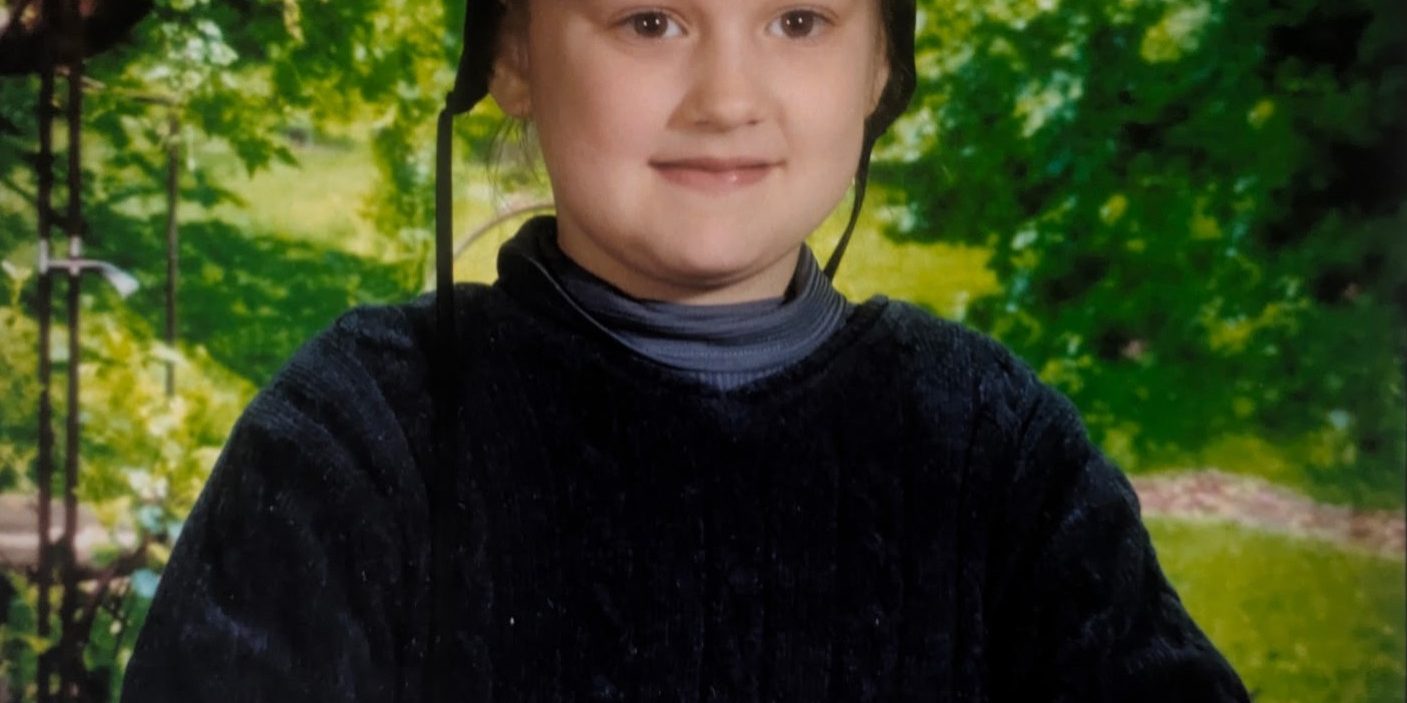
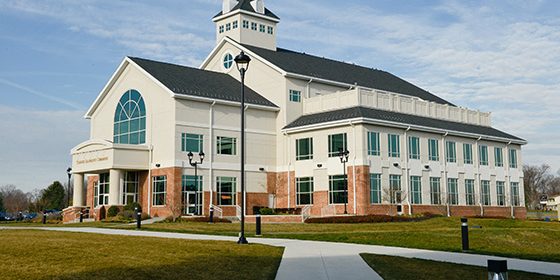
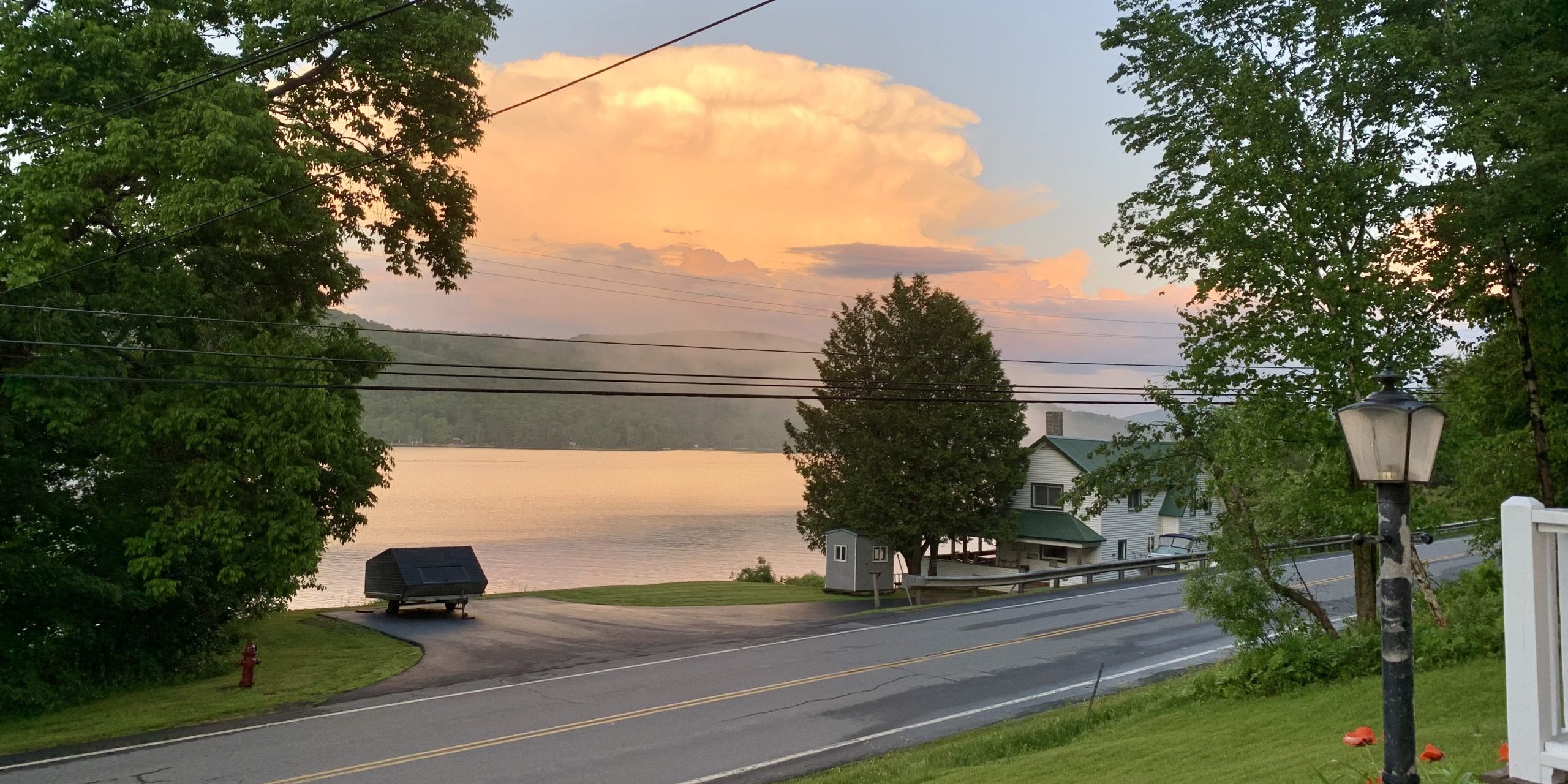
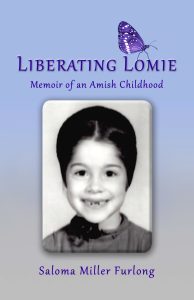

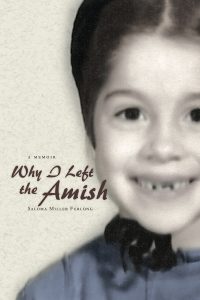
Very interesting article and great writing!
I agree, Stacy. I am also impressed by Eythana’s writing.
Thank you, Stacy 🙂
Interesting and well written. The line “The Amish are lucky that their social ecosystem provides a cocoon where their language can stay preserved and continue to grow: reminded me how my mother explained she never learned to speak Czech , despite her father being fluent, as she was discouraged to learn about her roots. What a cultural loss.
Yes Mary, this happens so frequently, and most people I know who didn’t learn a language their parents spoke seem to regret it later.
You have a beautiful gift of writing. Thanks for sharing all this fascinating information.
In a paper I had written for a basic linguistics class, I questioned whether the German word apfel and the English apple morphed into my PA Deitch pronunciation of “opple” where we dropped the f and kept the German “a” sound.
My younger brother moved to Virginia, where the Old Order Mennonites spoke English and he didn’t teach his children how to speak Pennsylvania Deitch. He claimed that the Deitch consists of too many English words, but I explained to him that many of the English words we use have German origins from when the Saxons invaded Great Britain many eons ago.
My experience has been that many of the people who left the Old Order Mennonites chose not to maintain the Deitch language and rather looked down on it as a lesser language. Even the English neighbors in the area I grew up in gave me the impression that Deitch was less than English. It always frustrated me and it wasn’t until I met other educated people who were into languages, or people who hadn’t grown up around Conservative Mennonites and Amish, that I experienced respect for and interest in my language.
About 20 years after leaving the Old Order Mennonites, I wasn’t around a lot of Deitch speaking people and I realized that I was no longer thinking in Deitch. It bothered me. I started getting raw milk from one of my cousins and after a few months realized that once again, depending on what I was thinking about, I was again thinking in Deitch occasionally.
I call Deitch a creole version of German and I’ve always been proud of being able to speak two languages fluently. When I was in grade school a teacher taught us to read the gothic German script. And I took a semester of German in college, but felt as if I needed to unlearn the Deitch articles in order to learn the German ones. I wish I would have taken the time to figure out if there was a pattern to the differences. I guess I still could! 😊
I think it’s awesome that you have become fluent in the German language. And I enjoyed reading your article. Thanks for listening to my ramblings!
Thanks for reading, Aleta! That’s interesting about neighbors and Old Order Mennonites making you feel that the language was less useful or interesting than English. I know a lot of people who stopped speaking it when they left the Amish because of bad experiences with the church and community, which is understandable in a way, but still feels like an unfortunate response to me. A language is always a valuable asset! I wish I’d learned the gothic script better in school; we did have lessons in it for a few years but it wasn’t very intensive and I don’t know how much stuck.
I like the description of it as a creole German, that’s actually a great way to think about it! And funny, I was just speaking to someone about articles who said the ones in Deitch should map onto standard German! I also have such a hard time with articles and haven’t been thinking of any overlap between the two languages but after hearing that, I want to start trying to connect them mentally and see if it helps! I’m not fluent yet, but on the way hopefully 🙂
[…] help us spread the word! I’ve enjoyed working with a dynamic and creative young woman named Eythana Miller to create this website, create systems for scholarship and mentorship applications, consider […]